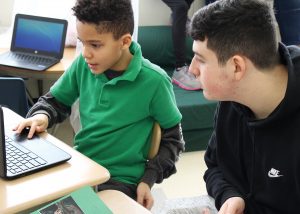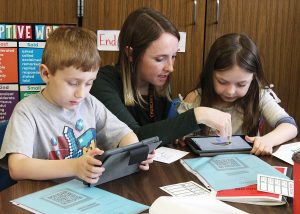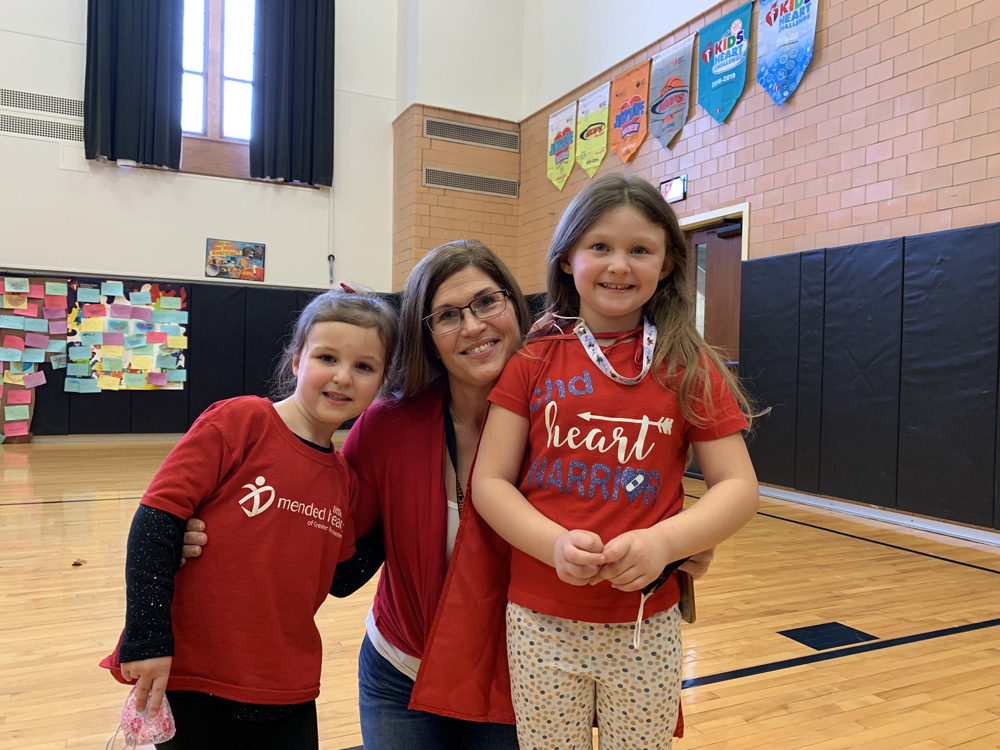Integrating technology into instruction at C-C schools

Churchville-Chili Central School District is in the sixth year of a technology plan to roll out 1:1 computer access to all students in grades K-12. Recently, the District’s 21st Century Technology Planning and Advisory Committee, a group of district administrators, teachers and librarians, reviewed the progress being made to ensure that instructional programs at all grade levels meet the International Society for Technology in Education (ISTE) standards for learning in the digital age.
“After reviewing examples of student work from over 300 Churchville-Chili teachers from all subjects and grade levels, we are proud to say that the district has kept pace with the changing ISTE standards and is meeting or exceeding them,” said Instructional Technology Specialist Megan Hugg. “Our teachers are thoughtfully incorporating a wide range of technology into the curricula that engage students and empower them to take charge of their own learning.”
For example, fourth-grade students are studying local history and sharing their digital presentations via distance learning technology with fourth-graders in other parts of New York State. At the Ninth Grade Academy, students create mock Instagram posts with visuals and hashtags that demonstrate their understanding of plot, theme and literary techniques used in Hemingway’s classic, “The Old Man and the Sea.”
“It’s really exciting to see how much our students can accomplish using the technology we’ve provided them with,” Hugg said.
ISTE standards have evolved since their introduction in 1998. Initially, they focused on ensuring that all students had access to digital tools and knew how to use them. Now, the goal is more ambitious: to leverage 1:1 access to internet-connected devices to transform student learning. There are seven current ISTE standards for students: empowered learner, digital citizen, knowledge constructor, innovative designer, computational thinker, creative communicator and global collaborator. Each standard represents skills and qualities that will enable students to thrive in a connected, digital world.

Thanks to a detailed analysis of these hundreds of projects, the committee identified two focus areas for improvement. Topping the list is empowered learner.
“This ties in exceptionally well with our district’s commitment to Learner-Centered Principles,” Hugg said. “Ensuring that our students can leverage technology to take a more active role in achieving their own learning goals is central to district guiding principles and core beliefs.”
The forward-looking plan also calls for emphasis on skills represented by the digital citizen standard.
“Students need more help becoming responsible, kind, positive and alert while online,” Hugg said. “We want them to stay safe and be aware of privacy, respect the intellectual property of others, and also understand the moral and legal issues that come along with the misuse of technology. Above all, we want them to be able to create a positive reputation for themselves online and to display ethics and good character.”
“Teachers are already doing a great job of using technology to enhance the learning experience at Churchville-Chili schools,” Hugg said. “The challenge is to expand our incorporation of digital tools, actually embedding them into the learning experience. We are seeing more and more classrooms adding higher levels of collaboration with classmates, connecting to global experts, engaging in data collection and analysis, and showcasing learning in creative ways.”




